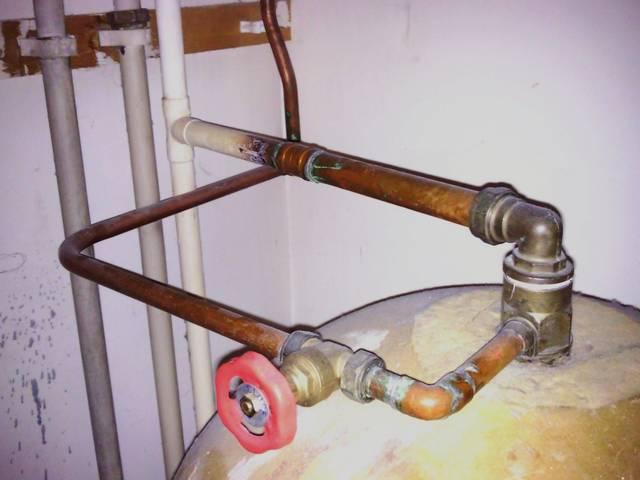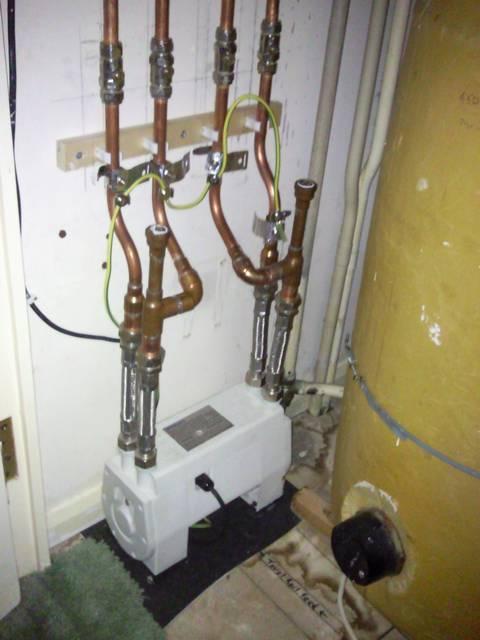I'm installing a shower pump in the airing cupboard.
At the moment there is a 15mm hot feed that comes out of the top of the hotwater cylinder alongside the main 22mm feed. The 22mm then travels horizontally to the center of a T, where it travels vertically up as a vent, and vertically down to supply all the hot water outlets.
The 15mm pipe will travel horizontally, and then down to the shower pump on the floor of the airing cupboard.
My question is whether this 15mm pipe should have some kind of vent in it somewhere?
Obviously the pipe will be full of air when I first fit it, but when I then open the gate valve on the 15mm at the top of the hot water cylinder will this be sufficient to push the air out of the pipe?
[code:1]
VENT?
/\
||
||
|| Gate Valve
--------XX---
| -------XX-| | ---- Some kind of flange....
|| --------
|| / \
|| / \
|| | |
|| | |
|| | |
|| | T A N K |
|| | |
|| | |
|------| | |
| PUMP | | |
|------| |__________|[/code:1]
Only showing the HOT shower feed (to try and gain some clarity), also coming from the flange on the top of the tank is the 22mm pipework for other hot water outlets and that does have a pipe that vents over the cold water tank in the loft.
If it does need a vent in the place indicated, what sort of vent do I need to get?
Thanks
At the moment there is a 15mm hot feed that comes out of the top of the hotwater cylinder alongside the main 22mm feed. The 22mm then travels horizontally to the center of a T, where it travels vertically up as a vent, and vertically down to supply all the hot water outlets.
The 15mm pipe will travel horizontally, and then down to the shower pump on the floor of the airing cupboard.
My question is whether this 15mm pipe should have some kind of vent in it somewhere?
Obviously the pipe will be full of air when I first fit it, but when I then open the gate valve on the 15mm at the top of the hot water cylinder will this be sufficient to push the air out of the pipe?
[code:1]
VENT?
/\
||
||
|| Gate Valve
--------XX---
| -------XX-| | ---- Some kind of flange....
|| --------
|| / \
|| / \
|| | |
|| | |
|| | |
|| | T A N K |
|| | |
|| | |
|------| | |
| PUMP | | |
|------| |__________|[/code:1]
Only showing the HOT shower feed (to try and gain some clarity), also coming from the flange on the top of the tank is the 22mm pipework for other hot water outlets and that does have a pipe that vents over the cold water tank in the loft.
If it does need a vent in the place indicated, what sort of vent do I need to get?
Thanks



